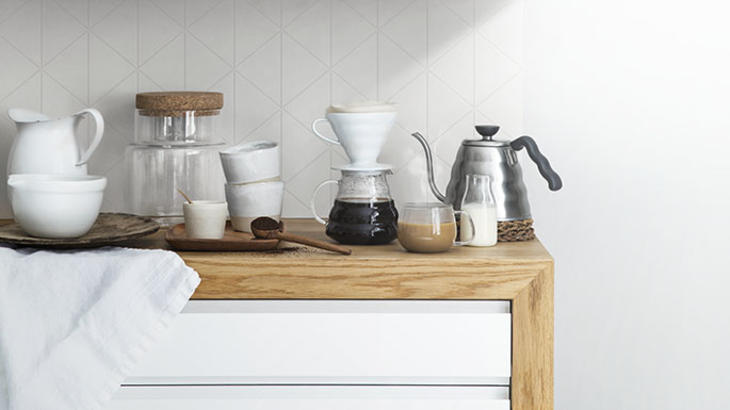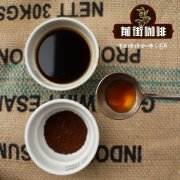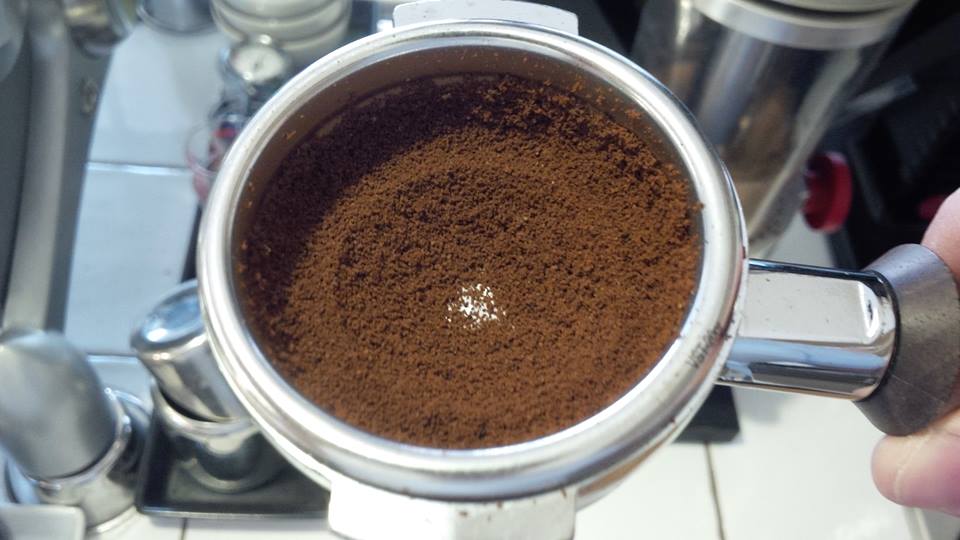How does a novice brew good coffee at home? There are 5 secrets to successful cooking!
Professional coffee knowledge exchange more coffee bean information please follow the coffee workshop (Wechat official account cafe_style)
Do you want to make yourself a good cup of coffee, but often get bogged down in online recommendations and introductions to different devices? In fact, good coffee is not so rare. Mastering some basic knowledge and operation can make your coffee taste very different from that before. Here are 5 tips on how to make a good cup of coffee!

When making coffee, do you have to buy professional and expensive equipment?
Whether you plan to make coffee at home or produce it professionally in a cafe, it doesn't matter. Professional utensils can make bad coffee, and amateur utensils can also make very good coffee. It is not recommended to buy machines that are super professional but also super expensive, because professional equipment can only improve the quality of your cup of coffee until there are not enough high-quality raw materials and skillful operation skills. Of course, do not choose some too cheap toy machines, stalls, if the service life is not long, the performance-to-price ratio is actually very low.
Coffee machines at different prices (including professional commercial coffee machines and household coffee machines) are mainly different in the quality of the parts unit and the design of details, and there is little difference in function (some may not necessarily be useful), so in a word, to watch the food and eat, it is up to people to be rich and frugal.
Fortunately, if you are making hand-brewed coffee, the equipment used at home and in professional cafes can be quite similar, so we don't need to consider too many appliance differences.
1. Coffee beans.
Make sure your coffee beans are fresh and of high quality. In addition, try to learn more about coffee beans: what kind of coffee beans are they, where they come from, and how to handle them?
Where did it come from? Mixed mix, single source or manor coffee? 100% Arabica or does it contain some Robusta? What are the subdivided subvarieties? Where does it come from and how is it planted and harvested?
Treatment: natural solarization? Double washing? Anaerobic fermentation? Honey treatment? Wet planing? .? With so many different methods, there are naturally so many different flavor types!
Organic production? The effects of fertilizers and pesticides on crops are simple: organic farming means cleaner and healthier. What about coffee from sustainable sources? Will there be a unique flavor of "socially sustainable coffee"? That's for sure! There is no. These organic, environmentally friendly and sustainable labels bring you more "moral" satisfaction and pleasure, and have nothing to do with the quality of coffee.
Roasting technique and baking degree-is a way to fully demonstrate the flavor of coffee by using time and temperature. Roasting has a great effect on the flavor of coffee. The taste is like a treasure locked in raw coffee beans, which can only be displayed through Mena reaction and caramelization reaction.
Packaging: there are many different packaging materials, different sealing types and exhaust solutions for cooked coffee beans. It is also important to remember to keep the coffee beans in the original package and keep them in a cool, dry and dark corner, even if they are replaced by other sealed containers.
two。 The quality and temperature of water
Water plays a great role in a cup of coffee. Fresh and clean drinking water quality is the basic requirement. For a little more advanced quality requirements, we also need to evaluate whether there are any substances and minerals in the brewing water that have a negative impact on coffee, whether they are balanced, and whether they need to be adjusted.
According to the Fine Coffee Association (SCA), the water temperature for brewing coffee should be between 90 and 96 degrees Celsius (um... Because the reason of baking degree above medium-deep baking is basically excluded). Of course, different coffee beans apply different water temperature parameters, so you might as well try more experiments near this range to see which value is more suitable for cooking!
3. Powder-water ratio
The "powder-to-water ratio" determines how much coffee powder and water we will use to brew coffee. According to SCA's suggestion, the best powder-to-water ratio should be "coffee powder 55g / hot water 1000ml ±10%", which is simply converted to 1:20.
In the minds of many people, the concentration of coffee is sometimes confused with the richness of coffee taste. However, the concentration represents the amount of soluble matter in the brewed coffee, while the strong antonym should be refreshing and insipid.
4. Extraction
To put it simply, extraction means to dissolve the flavor molecules hidden inside the coffee powder into water. However, not all cooking methods have the same extraction rate and extraction degree. We need to consider the following factors:
Grinding degree: the thickness is selected according to different cooking methods and equipment, which is mainly related to the cooking time.
Extraction method: drip filtration, soaking or pressure extraction?
Equipment: American automatic coffee machine, Philharmonic pressure, Chemex, siphon pot, French kettle, Hario V60 and similar espresso machine.
Filter type: if you use filter paper or cloth, remember to rinse clean!
When brewing coffee by hand, it is easiest to control the steaming process. We can use the steaming process to remove excess carbon dioxide from the coffee powder and adjust the coffee powder layer for subsequent brewing and extraction.
If we want to improve the extraction rate, we can add stirring. By stirring, the coffee powder can be rubbed and flowed with water, and the extraction can be obtained more quickly.
5. Cleaning equipment
Naturally, there is no need to talk about cleaning equipment. We all know how dirty coffee stains are and how bad coffee is: dull, greasy, bitter, and ready to ruin the rest of our day! Daily brush and water can be used to rinse, but remember to use detergent regularly to remove dirt and stains.
Extra hint: fresh coffee = best coffee.
Coffee doesn't need to be brewed and put into a sober an hour in advance. Believe me, no one likes to drink fully oxidized coffee. Especially those coffee machines with thermal insulation function, be careful of your coffee, long-term warm will bring you fuel consumption, sharp acidity, insipid aroma, and obvious bitterness and dryness.
Always maintain consistent cooking parameters and techniques!
No matter which cooking method you use, if you find the perfect proportion and parameters, please maintain the same cooking parameters and techniques for the next period of time. Because if you change one of the parameters, the taste will definitely change eventually. If you want to try other cooking effects, stick to "change only one parameter at a time". For example, if you want to change the ratio of powder to water, do not change the steaming time at the same time.
END
Important Notice :
前街咖啡 FrontStreet Coffee has moved to new addredd:
FrontStreet Coffee Address: 315,Donghua East Road,GuangZhou
Tel:020 38364473
- Prev

Coffee Sensory Identification II: What is coffee sensory evaluation?
Professional coffee knowledge exchange More coffee bean information Please pay attention to coffee workshop (Weixin Official Accounts cafe_style) What is sensory? Senses are indispensable skills in human life. We can divide our senses into five parts, according to the skills performed by the different organs of our body: taste, smell, sight, hearing, and touch. Coffee tasting: Everything is about the senses
- Next

Common sense of Espresso cooking | what are the tricks of "cloth powder" and "filling and pressing" to determine the outcome?
Professional coffee knowledge exchange more coffee bean information please follow the coffee workshop (Wechat official account cafe_style) We need to pay attention to when brewing espresso Espresso (to remind you, this is the definition of SCA, not IES) need to pay attention to: 1. Whether the powder is uniform or not; 2. Whether the cloth powder is flat. The purpose of the above two items is to make the powder in the filter cup uniform before filling and pressing.
Related
- Beginners will see the "Coffee pull flower" guide!
- What is the difference between ice blog purified milk and ordinary milk coffee?
- Why is the Philippines the largest producer of crops in Liberia?
- For coffee extraction, should the fine powder be retained?
- How does extracted espresso fill pressed powder? How much strength does it take to press the powder?
- How to make jasmine cold extract coffee? Is the jasmine + latte good?
- Will this little toy really make the coffee taste better? How does Lily Drip affect coffee extraction?
- Will the action of slapping the filter cup also affect coffee extraction?
- What's the difference between powder-to-water ratio and powder-to-liquid ratio?
- What is the Ethiopian local species? What does it have to do with Heirloom native species?

